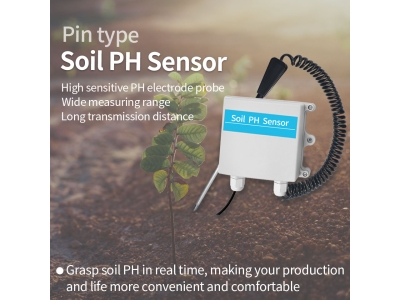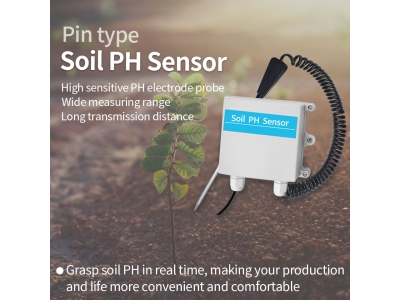Crop management is a crucial aspect of agriculture that directly impacts crop yield, quality, and overall farm profitability. To optimize crop management practices, farmers rely on accurate and timely information about soil conditions. In recent years, advancements in technology have led to the development of soil sensors, which provide real-time data on various soil parameters. In this article, we will explore the benefits of soil sensors in crop management and how they are revolutionizing modern farming practices.
Precise Irrigation Management
One of the significant advantages of soil sensors is their ability to provide real-time data on soil moisture content. Soil moisture sensors measure the amount of water present in the soil, allowing farmers to make more informed decisions about irrigation management. By monitoring soil moisture levels, farmers can avoid over- or under-watering their crops, leading to improved water use efficiency and reduced water waste. This precise irrigation management ensures that crops receive the optimal amount of water, promoting healthy growth and minimizing the risk of water stress-related issues.
Efficient Nutrient Management
Soil sensors also play a vital role in optimizing nutrient management. They allow farmers to monitor nutrient levels in the soil, such as nitrogen, phosphorus, and potassium. With this information, farmers can accurately assess the nutrient requirements of their crops and apply fertilizers only where necessary. By avoiding excessive fertilizer application, farmers can reduce costs, minimize nutrient runoff into water bodies, and mitigate the environmental impact associated with nutrient pollution. Additionally, soil sensors help ensure that crops receive adequate nutrients, improving plant health, and optimizing yield potential.

Timely Disease and Pest Detection
Soil sensors can indirectly contribute to disease and pest management by providing valuable data on soil conditions that affect the prevalence of pests and diseases. Certain soil parameters, such as soil temperature and moisture, can influence the survival and activity of pests and pathogens. By monitoring these parameters with soil sensors, farmers can gain insights into potential disease and pest risks in their fields. Early detection allows for timely intervention, such as targeted pesticide application or disease-resistant crop varieties, reducing crop losses and preserving overall yield and quality.
Improved Soil Health Management
Maintaining soil health is crucial for sustainable and productive agriculture. Soil sensors provide valuable information about soil pH, organic matter content, and compaction levels, which are essential indicators of soil health. By continuously monitoring these parameters using soil sensors, farmers can proactively manage soil health issues. For example, they can adjust soil pH through targeted lime applications or implement measures to reduce soil compaction, such as controlled traffic farming. By actively managing soil health, farmers can maximize nutrient availability, enhance soil structure, and promote beneficial microbial activity, leading to improved crop growth and yield potential.
Optimization of Crop Rotation and Cover Cropping
Crop rotation and cover cropping are important practices in sustainable farming systems. Soil sensors can assist farmers in optimizing these practices by providing valuable information on soil conditions for different crops. By monitoring soil moisture, nutrient levels, and other relevant parameters, farmers can select suitable crop rotations and cover crops that complement the existing soil conditions. This ensures that crops are grown in environments where they can thrive, minimizing the risk of yield loss due to unfavorable soil conditions. Additionally, optimized crop rotations and cover cropping can help manage pests, weeds, and diseases, reducing the reliance on synthetic inputs and promoting long-term soil sustainability.
Conclusion
Soil sensors have transformed crop management practices by providing real-time data on soil conditions. The benefits of soil sensors include precise irrigation management, efficient nutrient management, timely disease and pest detection, improved soil health management, and optimization of crop rotation and cover cropping. By harnessing the power of soil sensors, farmers can make data-driven decisions to optimize crop yield, reduce input costs, and promote sustainable farming practices. As technology continues to advance, the integration of soil sensors with other digital tools such as artificial intelligence and machine learning holds immense potential for further enhancing crop management and driving agricultural productivity to new heights.






